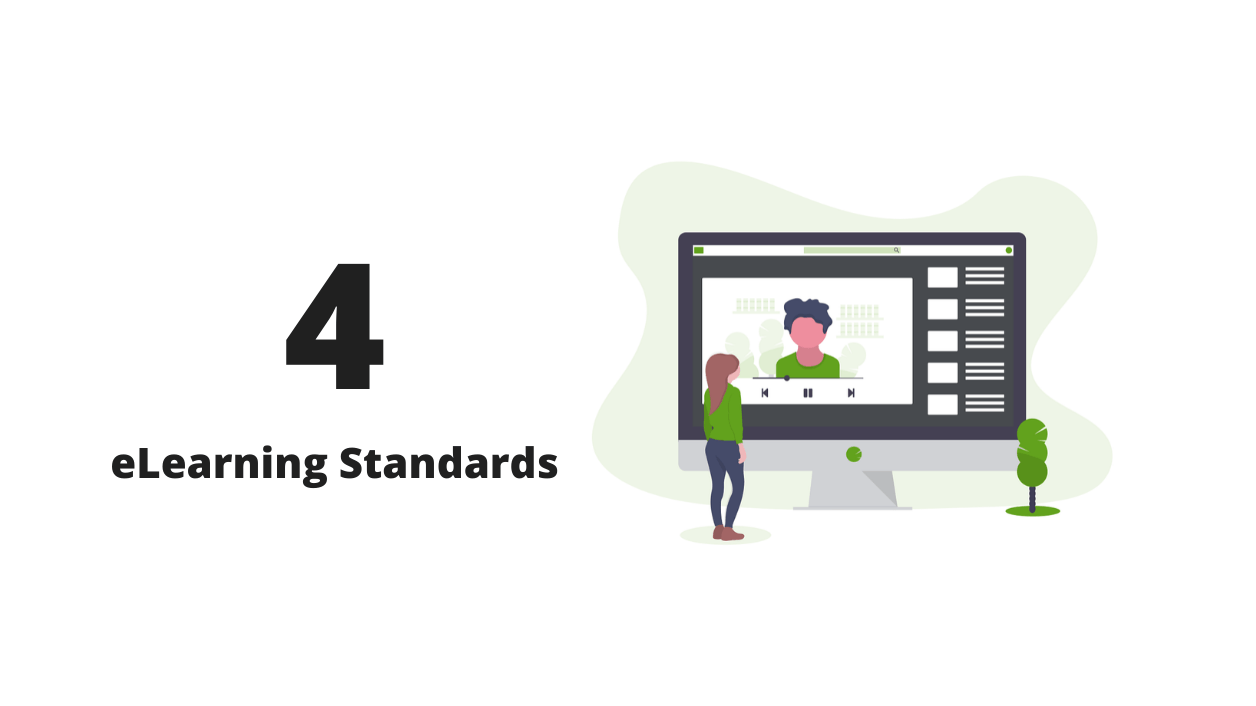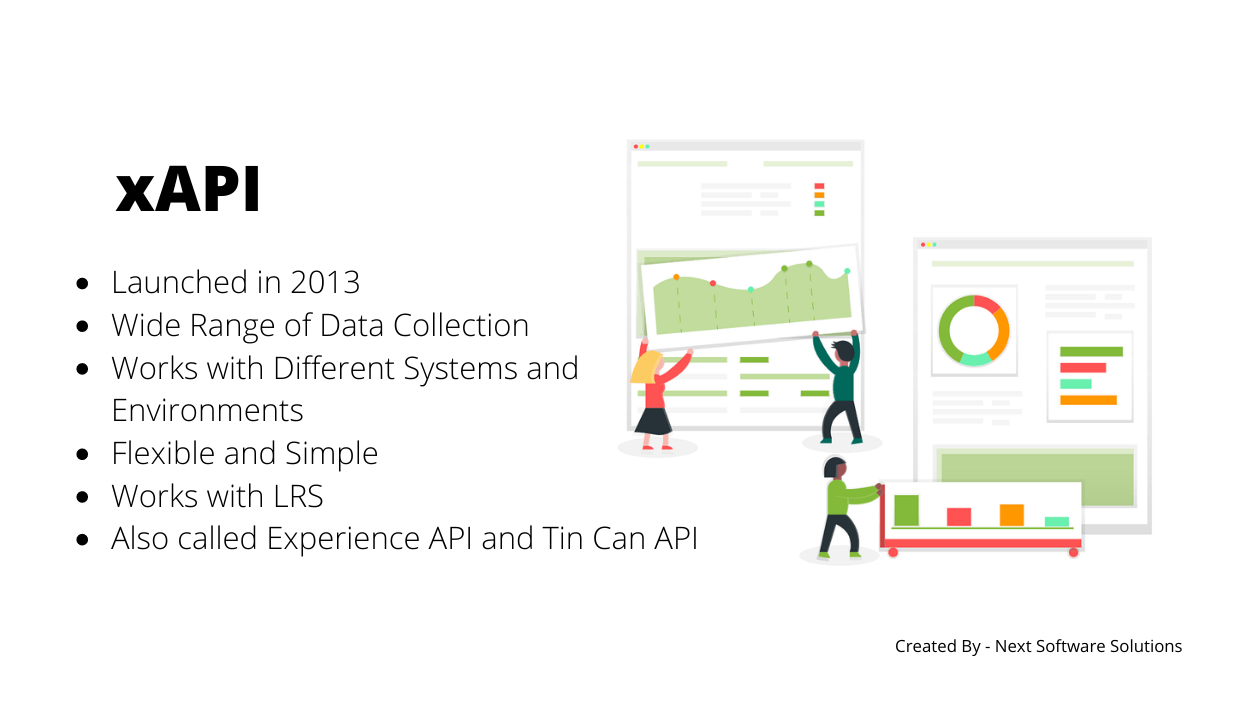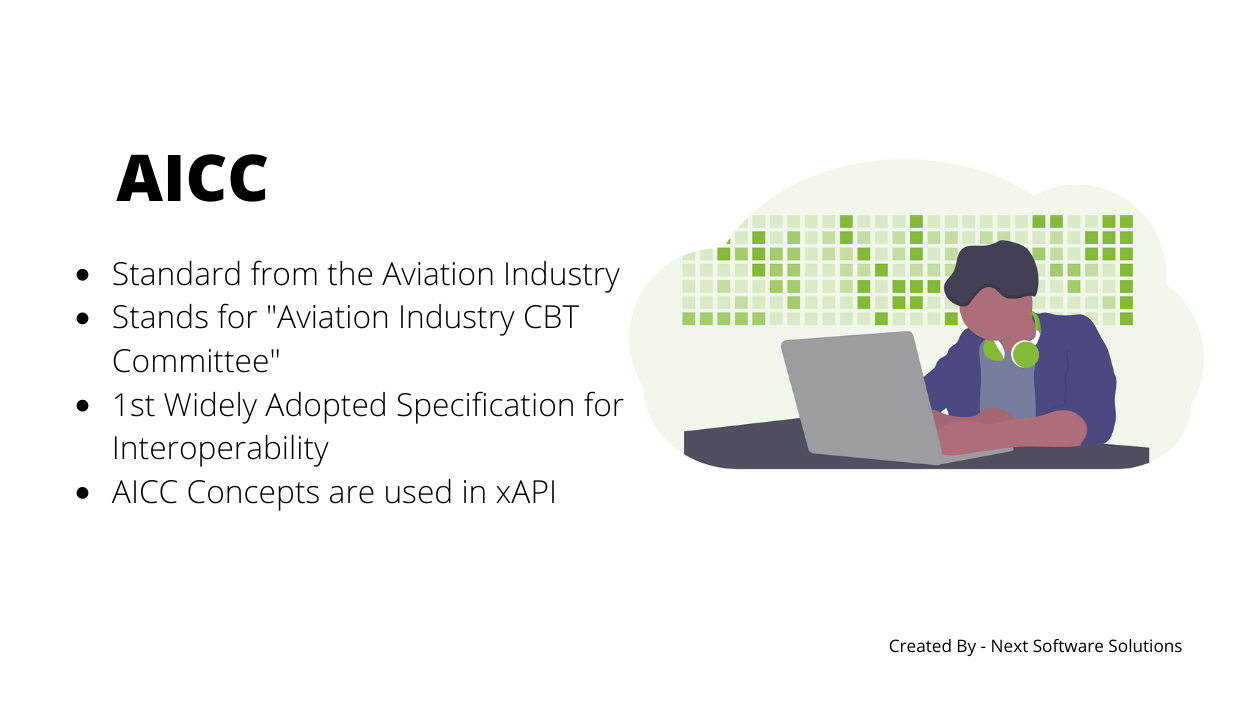
There are 4 eLearning standards for reporting learner’s progress. Now, you might be thinking, What is an eLearning Standard?
An eLearning Standard provides a set of instructions for the Learning Management System and eLearning Content. It tells what reporting you can do by using a particular standard.
There are many LMS(s), and most of the popular eLearning Content authoring tools support these standards.
If you’re going to create training content, then you should know about these eLearning standards.
The 4 eLearning Standards are as follows:
- Experience API
- cmi5
- SCORM
- AICC
Let’s learn about every eLearning Standard, we will start with the most popular one.
Experience API (xAPI)

Experience API or Tin Can API is the advanced version of SCORM, also called “Next-Gen SCORM.” ADL released the first version of xAPI on 23rd April 2013.
Tin Can API can do everything that SCORM was doing, but it can do a lot more things that make it a true successor of SCORM.
xAPI helped the eLearning industry in solving lots of real-world problems like:
- Mobile Learning
- Team-Based Learning
- Cross-domain Functionality
- No need for web browser
- Simulations
After connecting it with xAPI, these goals are relatively easy to achieve.
Read: xAPI vs. SCORM: The Future of eLearning Analytics?
If you want to see learner’s tracking beyond LMS and web browsers, then go for Experience API. xAPI has lots of advantages over any eLearning Standard present to date.
xAPI works with the Learning Record Store, and it sends the user’s activity data to LRS. An LRS can be a stand-alone system; it can also live inside an LMS.
Read: 7 Key Benefits of Learning Record Store

cmi5 (xAPI Companion)
The first version of cmi5 was released on 1st June 2016, it works as an extension of Experience API. You can say this is a companion specification of xAPI.
cmi5 provides a set of rules intended to achieve interoperability in a traditional LMS environment. It uses the xAPI as the communication protocol and data format.
If you’re using a traditional LMS but want to report and flexibility with your system, you can try cmi5. It uses xAPI as the communication protocol and data format.
It defines the concept of a course structure that is intended to be packaged and imported into an LMS.

SCORM
SCORM stands for the “Shareable Content Object Reference Model.” The first version (SCORM 1.0) was released in January 2000.
This is the most popular eLearning Standard with interoperability support. So, you can create content and use that content in LMS and track user progress.
There are three other versions of the SCORM, and some editions are also available.
- SCORM 1.1
- SCORM 1.2
- SCORM 2004
Simply put, when you create content in authoring tools and export it with SCORM as LMS standard. Then it comes with SCORM specifications, which defines what you can track from the user’s interactions.
Like, you can get this information by using the SCORM standard:
- Time
- Score of Quiz
- Completed
- Passed/Failed

AICC
AICC stands for “Aviation Industry CBT Committee,” was an e-Learning standard development authority. But this organization was working until 2014.
The interoperability specifications proposed by AICC were the first and widely adopted by eLearning content development tools and LMS(s).
The development of SCORM specifications was followed by guidelines of AICC. Also, this standard is widely adopted, like SCORM 1.2.
Conclusion
If you’re planning to join the eLearning field, then you must be aware of these standards. You need to choose the best and suitable standard to make the most out of your eLearning project.
I hope you find this information useful, for more latest and quick eLearning updates follow us on Facebook, Twitter, LinkedIn, and YouTube.
